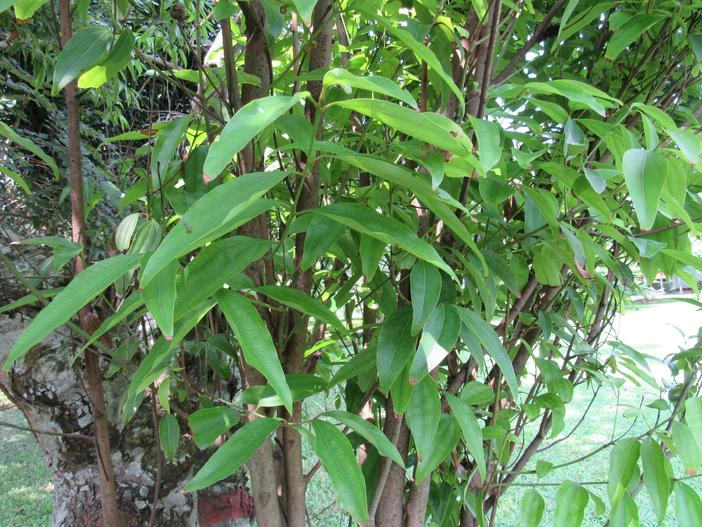Indian Bay Leaf
(Cinnamomum tamala)
Indian Bay Leaf (Cinnamomum tamala)
/
/

Afifa Afrin
CC BY-SA 3.0















Estimated Native Range
Climate Requirements for Avondale, Arizona
| This Plant | Your Site | Plant Suitability for Your Location | ||
|---|---|---|---|---|
| • Precipitation | 16" - 276" | 7" | Your precipitation may be insufficient for this plant. Irrigate N" / year. | Irrigate N" / year |
| • High Temp. | 67°F - 107°F | 105°F | Your summer temperatures are normal for this plant. | Excellent |
| • Low Temp. | 11°F - 72°F | 38°F | Your winter temperatures are normal for this plant | Excellent |
Summary
Indian bay leaf is valued for its aromatic leaves, which are a staple in culinary applications. It thrives in warm climates and prefers full sun to part shade, with well-drained, fertile soil. Regular watering is necessary, especially during dry periods. In cultivation, it is used for its leaves in cooking and sometimes as an ornamental tree in tropical and subtropical gardens. While generally pest-free, it can be susceptible to leaf spot diseases. The tree is also historically significant, believed to be one of the sources of the ancient medicinal plant malabathrum.CC BY-SA 4.0
Plant Description
- Plant Type: Shrub, Tree
- Height: 20-30 feet
- Width: 20-30 feet
- Growth Rate: Moderate
- Flower Color: Green, Yellow
- Flowering Season: Fall
- Leaf Retention: Evergreen
Growth Requirements
- Sun: Full Sun
- Water: Medium
- Drainage: Medium, Fast
Common Uses
Edible*Disclaimer: Easyscape's listed plant edibility is for informational use. Always verify the safety and proper identification of any plant before consumption., Fragrant, Low Maintenance
Natural Habitat
native to the forested foothills of the Himalayas, including the Himalayas, Bangladesh, Nepal, and Bhutan, as well as parts of China
Other Names
Common Names: Indian Bay Leaf, Tamalpatra, Indian-Cassia, Chai Gui, Tejpat, Indian Bay Leaves, Malabathrum, Tej Patta
Scientific Names: Cinnamomum tamala, Cinnamomum albiflorum, Cinnamomum lindleyi, Cinnamomum reinwardtii, Cinnamomum tamala var. albiflorum, Cinnamomum tamala var. elliptifolium, Cinnamomum veitchii, Cinnamomum zwartzii, Laurus albiflora
GBIF Accepted Name: Cinnamomum tamala